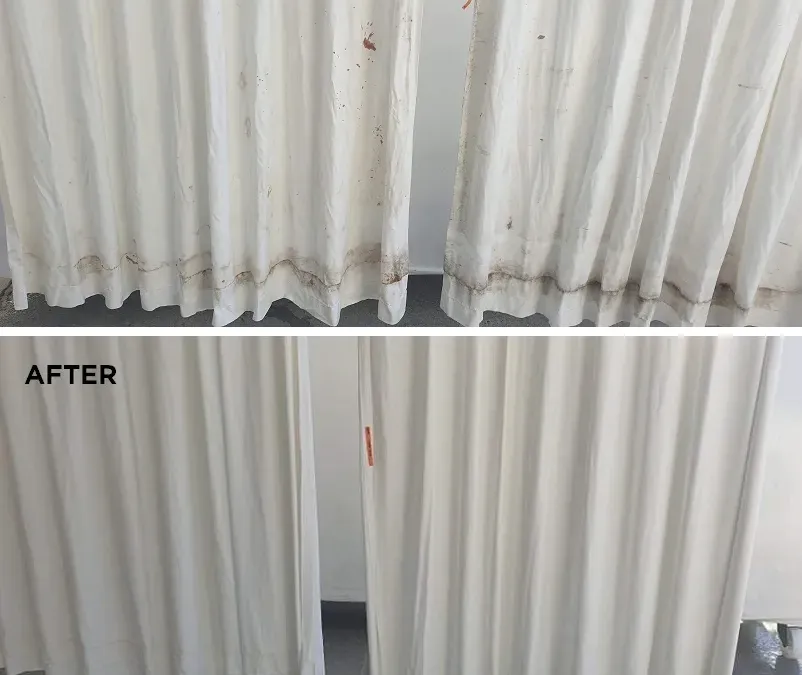How to Prevent Mouldy Curtains and Blinds
Why does mould appear in the first place?
Mould grows in damp areas where there is a food source such as dust, dirt or organic material. That’s why single glazed or drafty windows, where condensation and dust are common, are often a problem area.
What are some tips for preventing mould growth?
Clean soft furnishings regularly according to the manufacturer’s instructions. This usually involves a regular light vacuum, with less frequent dry cleaning or laundering. Regularly clean windows and wipe down window surrounds and venetian blinds or shutters with a mild detergent in warm water.
Does the material of the curtains affect how much mould will grow?
Yes, consider selecting window coverings manufactured from man-made materials, particularly in damp areas such as the bathroom, kitchen and on south-facing windows. It’s best to use a wipe-able, water-resistant blind or shutter in wet areas like bathrooms and kitchens. Even man-made fabrics don’t cope well in those environments.
How do I remove the mould?
Once mould develops it’s best to nip it in the bud as early as possible with a thorough clean. Some curtains can be hand washed (check the manufacturer’s instructions) but, for best results, we recommend taking them to a specialist cleaner. Curtain Clean services most of the North Island and takes care of all types of curtains and blinds.
Since moisture is the culprit, how can we minimise it in our homes?
- Use lids on pots and pans when cooking.
- Never hang clothes to dry inside and vent your clothes drier to the outside.
Keep reading: www.curtainclean.co.nz...

We're talking new year resolutions...
Tidying the house before going to bed each night, meditating upon waking or taking the stairs at work.
What’s something quick, or easy, that you started doing that made a major positive change in your life?

⚠️ DOGS DIE IN HOT CARS. If you love them, don't leave them. ⚠️
It's a message we share time and time again, and this year, we're calling on you to help us spread that message further.
Did you know that calls to SPCA about dogs left inside hot cars made up a whopping 11% of all welfare calls last summer? This is a completely preventable issue, and one which is causing hundreds of dogs (often loved pets) to suffer.
Here are some quick facts to share with the dog owners in your life:
👉 The temperature inside a car can heat to over 50°C in less than 15 minutes.
👉 Parking in the shade and cracking windows does little to help on a warm day. Dogs rely on panting to keep cool, which they can't do in a hot car.
👉 This puts dogs at a high risk of heatstroke - a serious condition for dogs, with a mortality rate between 39%-50%.
👉 It is an offence under the Animal Welfare Act to leave a dog in a hot vehicle if they are showing signs of heat stress. You can be fined, and prosecuted.
SPCA has created downloadable resources to help you spread the message even further. Posters, a flyer, and a social media tile can be downloaded from our website here: www.spca.nz...
We encourage you to use these - and ask your local businesses to display the posters if they can. Flyers can be kept in your car and handed out as needed.
This is a community problem, and one we cannot solve alone. Help us to prevent more tragedies this summer by sharing this post.
On behalf of the animals - thank you ❤️









 Loading…
Loading…